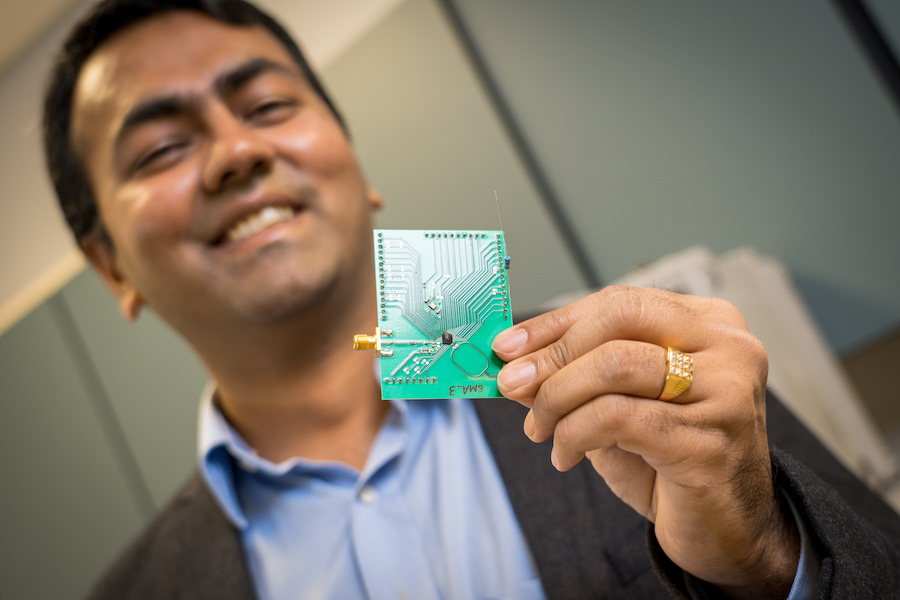› Forums › IoTStack › News (IoTStack) › New Chip Brings Ultra-Low Power Wi-Fi Connectivity to IoT Devices
Tagged: ConnectivityTech_S8, FPGA_H3, Tech_G15
- This topic is empty.
-
AuthorPosts
-
-
April 28, 2020 at 5:49 pm #41257
#News(IoTStack) [ via IoTGroup ]
Headings…
UC San Diego News Center
New Chip Brings Ultra-Low Power Wi-Fi Connectivity to IoT Devices
Share
Media Contact
Media Contact
Filed Under
About Our Campus
Important information
UC San Diego
Divisions and SchoolsAuto extracted Text……

A set of ultra-low power Wi-Fi radios integrated in small chips, each measuring 1.5 square millimeters in area (grain of rice shown for scale).
These could all be made possible thanks to a new ultra-low power Wi-Fi radio developed by electrical engineers at the University of California San Diego.
The device, which is housed in a chip smaller than a grain of rice, enables Internet of Things (IoT) devices to communicate with existing Wi-Fi networks using 5,000 times less power than today’s Wi-Fi radios.
UC San Diego electrical and computer engineering professor Dinesh Bharadia holds a PCB onto which the Wi-Fi radio is mounted (component underneath the black blob).
Commercial Wi-Fi radios typically consume hundreds of milliwatts to connect IoT devices with Wi-Fi transceivers.
As a result, Wi-Fi compatible devices need either large batteries, frequent recharging or other external power sources to run.
“This Wi-Fi radio is low enough power that we can now start thinking about new application spaces where you no longer need to plug IoT devices into the wall.
“It could also allow you to connect devices that are not currently connected—things that cannot meet the power demands of current Wi-Fi radios, like a smoke alarm—and not have a huge burden on battery replacement,” Mercier said.
The Wi-Fi radio runs on extremely low power by transmitting data via a technique called backscattering.
This work builds on low-power Wi-Fi radio technology that Bharadia helped develop as a Ph.D. student at Stanford.
In this project, he teamed up with Mercier to develop an even lower-power Wi-Fi radio.
This “wakes up” the Wi-Fi radio only when it needs to communicate with Wi-Fi signals, so it can stay in low-power sleep mode the rest of the time, during which it consumes only 3 microwatts of power
Read More..
AutoTextExtraction by Working BoT using SmartNews 1.02976805238 Build 26 Aug 2019
-
-
AuthorPosts
- You must be logged in to reply to this topic.
